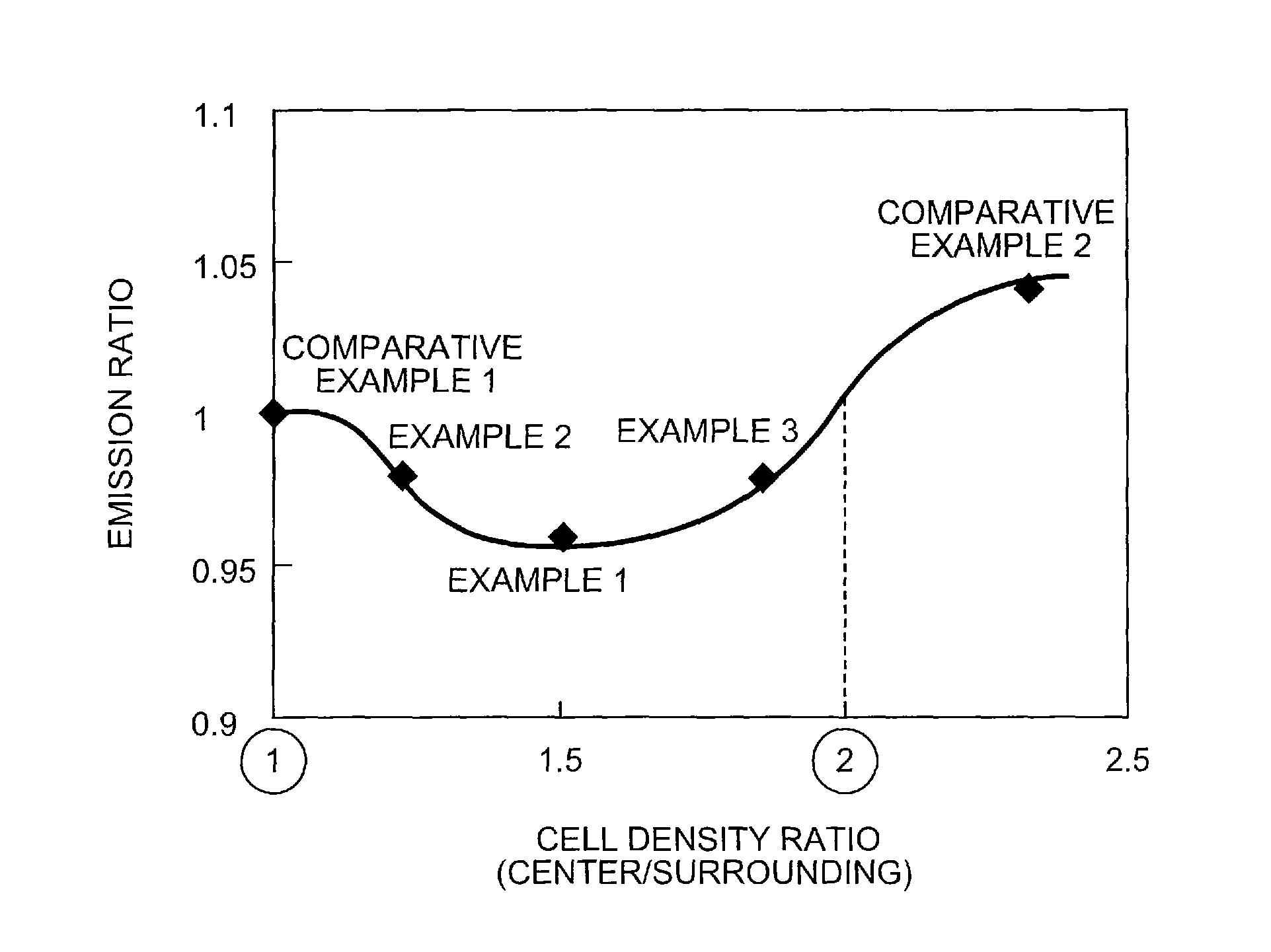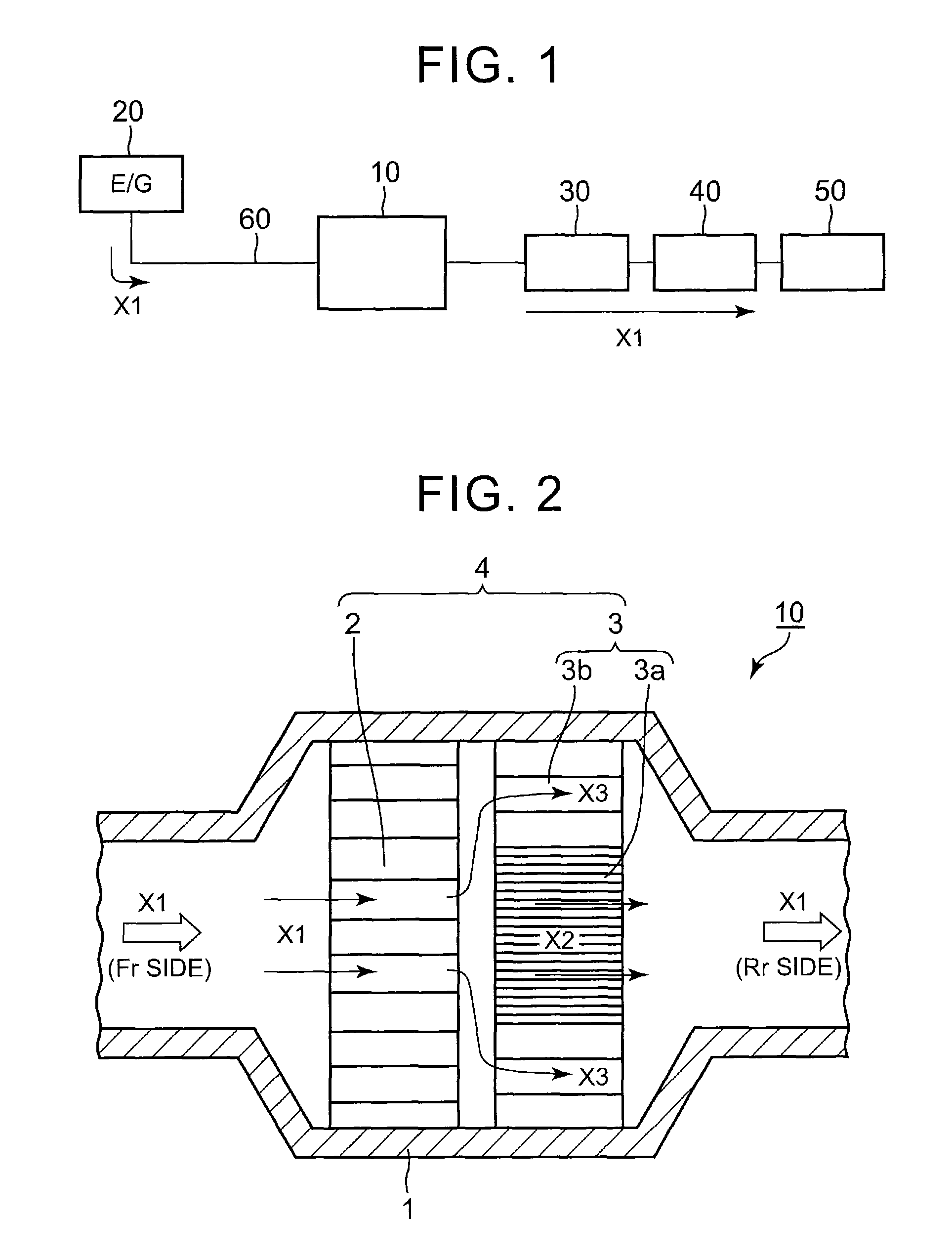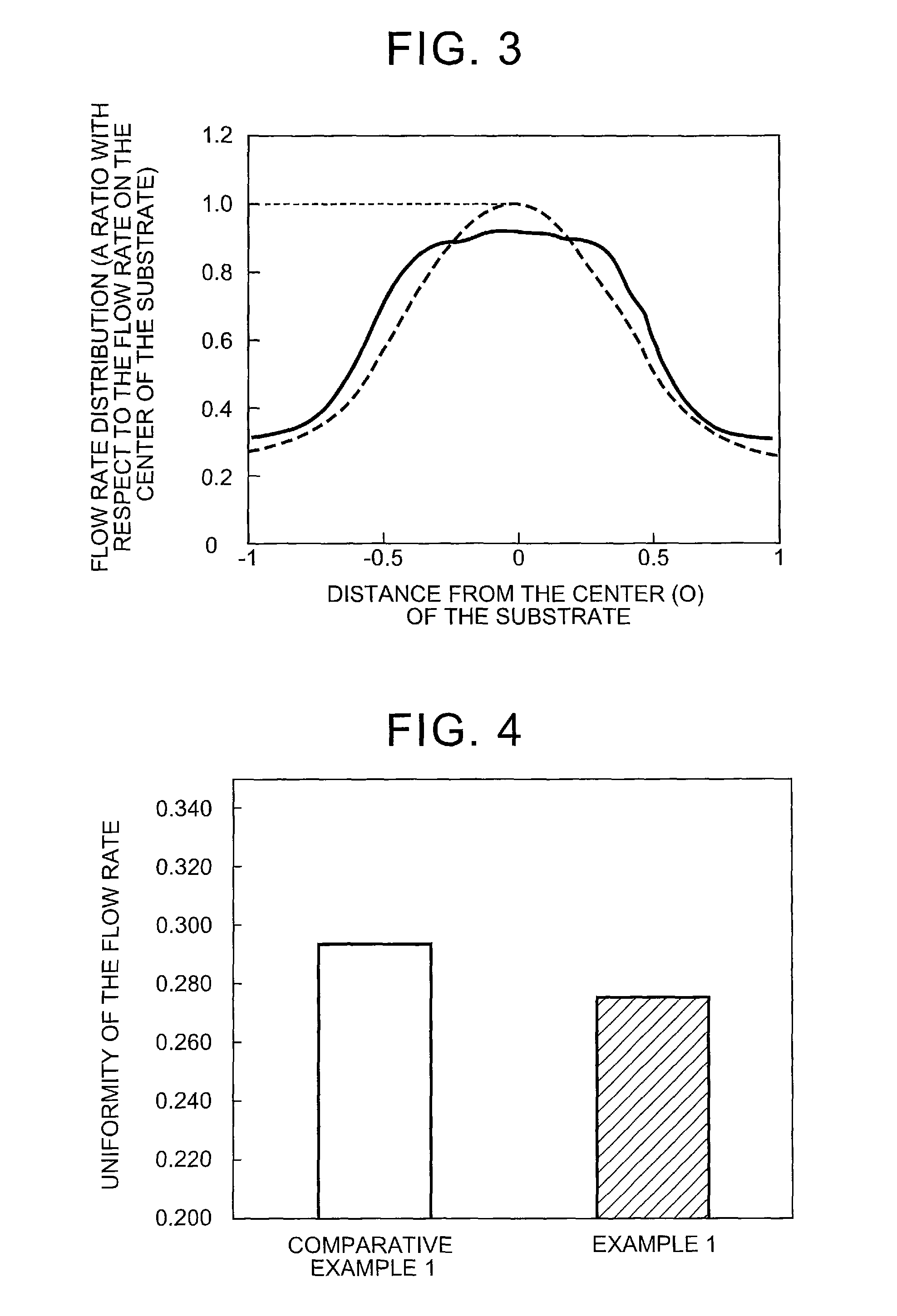Catalytic converter
a catalytic converter and converter technology, applied in the field of catalytic converters, can solve the problems of insufficient use of catalysts of the whole substrate, insufficient use of exhaust gas in surrounding areas, and insufficient use of area, so as to improve the activity of honeycomb catalysts, and improve the effect of thermal shock performan
- Summary
- Abstract
- Description
- Claims
- Application Information
AI Technical Summary
Benefits of technology
Problems solved by technology
Method used
Image
Examples
example 1
[0055]A honeycomb structured substrate made of cordierite is manufactured by press forming, and the cell densities in the center area and the surrounding area are different. The sizes of the honeycomb structure are as follows: a diameter φ of a circular cross section perpendicular to the flow direction of the exhaust gas is 103 mm, a length of a longitudinal direction is 105 mm, a cell density of the surrounding area with low cell density is 300 cpsi (52 per cm2), a cell density of the center area with high cell density is 600 cpsi (93 per cm2), and lattice shapes of the cells are all quadrilateral. In addition, the support constituting the catalyst layer is Al2O3—CeO2—ZrO2 composite oxide (ACZ material) supported with 0.3 g / L of Pt and 0.1 g / L of Rh as noble metal catalyst
PUM
| Property | Measurement | Unit |
|---|---|---|
| length | aaaaa | aaaaa |
| length | aaaaa | aaaaa |
| temperature | aaaaa | aaaaa |
Abstract
Description
Claims
Application Information
 Login to View More
Login to View More - R&D
- Intellectual Property
- Life Sciences
- Materials
- Tech Scout
- Unparalleled Data Quality
- Higher Quality Content
- 60% Fewer Hallucinations
Browse by: Latest US Patents, China's latest patents, Technical Efficacy Thesaurus, Application Domain, Technology Topic, Popular Technical Reports.
© 2025 PatSnap. All rights reserved.Legal|Privacy policy|Modern Slavery Act Transparency Statement|Sitemap|About US| Contact US: help@patsnap.com



